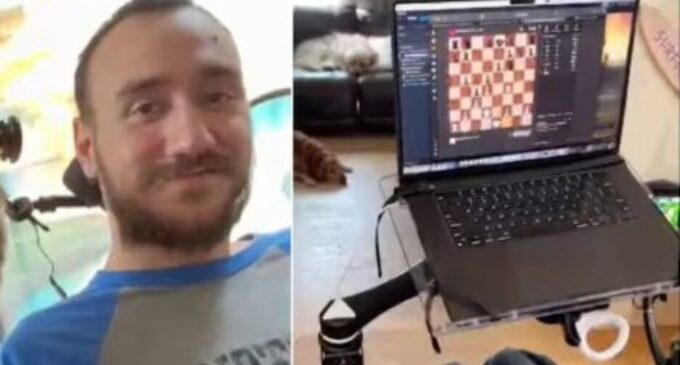Neuralink’s first patient controls computer, plays chess just by thinking

NEW DELHI, MAR 21 : Elon Musk’s brain-chip startup Neuralink on Thursday showed its first patient being able to play online chess and video games just by his thoughts, using the Neuralink device. A video widely shared on the internet also showed the patient implanted with a chip.
In the video, the patient introduced himself as 29-year-old Noland Arbaugh, who was paralysed below the shoulder after a diving accident.
He could be seen playing chess on his laptop and moving the cursor using the Neuralink device.
“If you all can see the cursor moving around the screen, that’s all me,” he said during the livestream as he moved a digital chess piece.
“It’s pretty cool, huh?”, he added.
The video also showed Arbaugh describing the process of using the brain-computer interface.
“I would attempt to move, say, my right hand, left, right, forward, back, and from there I think it just became intuitive for me to start imagining the cursor moving,” he said.
Arbaugh also says he feels lucky to be part of the Neuralink study.
“I just can’t even describe how cool it is to be able to do this,” he said.
WHAT IS NEURALINK?
Founded by Musk in 2016, Neuralink is a brain-chip startup. It is a device, the size of a coin, which is surgically implanted in the skull. Its ultra-thin wires go into the brain and develop a brain-computer interface (BCI).
The disk would register brain activity and send it over to a device, such as a smartphone, through a common Bluetooth connection.
In February this year, the startup’s founder Musk said the first human patient implanted with a brain chip from Neuralink appears to have fully recovered and was able to control a computer mouse using their thoughts.
“Progress is good, and the patient seems to have made a full recovery, with no ill effects that we are aware of,” Musk said.
“The patient is able to move a mouse around the screen by just thinking,” Musk said in a Spaces event on social media platform X.
Musk also said Neuralink was now trying to get as many mouse button clicks as possible from the patient.
-The India Today






